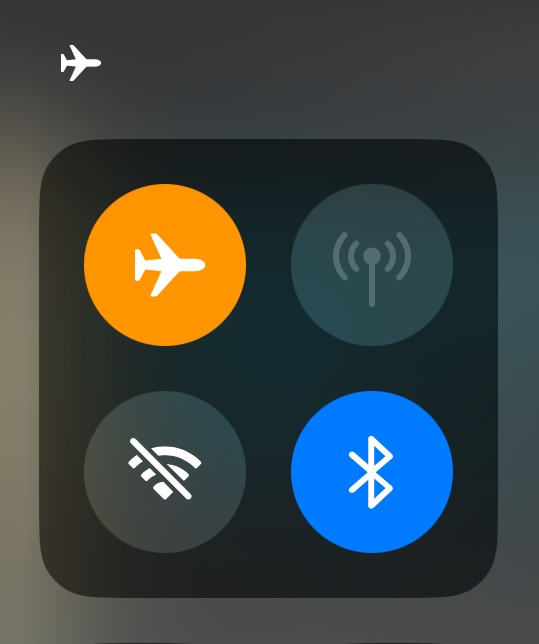zhǐyǐn (zhǐ·yǐn {(pointing with) finger → [pointing]} · guiding; leading 指引) 👈🏼 Tap/click to show/hide the “flashcard”
[Notes: Tap/click on a Pīnyīn (Pīn·yīn {Piecing Together of} · Sounds → [Pinyin] 拼音) expression to reveal its “flashcard”; tap/click on a “flashcard” or its Pīnyīn (Pīn·yīn {Piecing Together of} · Sounds → [Pinyin] 拼音) expression to hide the “flashcard”. 📖 📄 📘 icons mean 📖 Reveal All, 📄 Reveal Advanced, and 📘 Reveal None re all the “flashcards” in the heading, paragraph, etc. that they are placed at the beginning of.]
Recently, I came across a video entitled “Margarita Königer: Glad I Chose This Career”. (This Watchtower article briefly discusses Sis. Königer’s experience coming into the truth, and her service up to about 1995. The video, which has a copyright date of 2016, is more up-to-date. In the video, we learn that Sis. Königer began serving as a missionary in 1966, and that she had at that point been a missionary in the Chinese field in Budapest, Hungary for nine years.)
Because of what I have seen and experienced in the Mandarin field for over three decades, what Sis. Königer said starting at about the 5:10 mark of the video really resonates with me:
English:
If you are in the full-time service, I think it’s like you are travelling and Jehovah is directing you.
Mandarin:
📖 📄 📘 Wǒmen (Wǒ·men we · [pl] 我们 我們) tóurù (tóu·rù {(if) throw} · {to enter} → [(if) participate in] 投入) quánshí (quán·shí full-·time 全时 全時) fúwù (fú·wù serving · {devoting (of oneself)} → [service] 服务 服務), jiù (then 就) hǎoxiàng (hǎo·xiàng (it) {well → [very much]} · {is like} 好像/象) shì ({(it) is (that)} 是) nǐ (you 你) zài ({are in} → [are now] 在) lǚxíng (travelling 旅行), ér (and 而) Yēhéhuá (Jehovah 耶和华 耶和華) yìzhí (yì·zhí one · {being straight} → [all the while] 一直) zhǐyǐn (zhǐ·yǐn {(is pointing with) finger → [is pointing]} · {is guiding} 指引) nǐ de ((nǐ you 你) (de ’s 的) → [your]) fāngxiàng (fāng·xiàng direction · {to be faced} 方向).
As can be seen above, this week’s MEotW, “zhǐyǐn (zhǐ·yǐn {(pointing with) finger → [pointing]} · guiding; leading 指引)”, is used in the Mandarin version of the above-mentioned video to correspond to the English word “directing”.
I have often felt like a fly on the wall observing Jehovah’s hand at work in the establishment and development of several Mandarin groups and congregations in my local area, and I have also seen much evidence that Jehovah has been directing things in the worldwide Mandarin field.
Photocopies and Handwriting
Specifically with regard to the development of material based on the organization’s official Chinese publications, but that includes Pīnyīn (Pīn·yīn {Piecing Together of} · Sounds → [Pinyin] 拼音) or Zhùyīn (Zhù·yīn {Annotating of} · Sounds → [Zhuyin] 注音 註/注音) to help Mandarin field language learners get past the imposing Great Wall of Chinese characters, I saw how things started in the 1980s or 1990s. Somewhere around that time, Chinese congregation elders on the West Coast of North America began directing teams of publishers who would make enlarged photocopies of official Chinese publications, and then painstakingly handwrite Pīnyīn (Pīn·yīn {Piecing Together of} · Sounds → [Pinyin] 拼音) or Zhùyīn (Zhù·yīn {Annotating of} · Sounds → [Zhuyin] 注音 註/注音) ruby text between the lines of characters. (In those days, many of the publishers involved were from Taiwan, where they were taught Zhùyīn (Zhù·yīn {Annotating of} · Sounds → [Zhuyin] 注音 註/注音) in school.) Photocopies would then be made of these handwritten “originals”, for distribution to hungry Mandarin field language learners at the local meetings and to be sent via snail mail, etc. to those in other places.
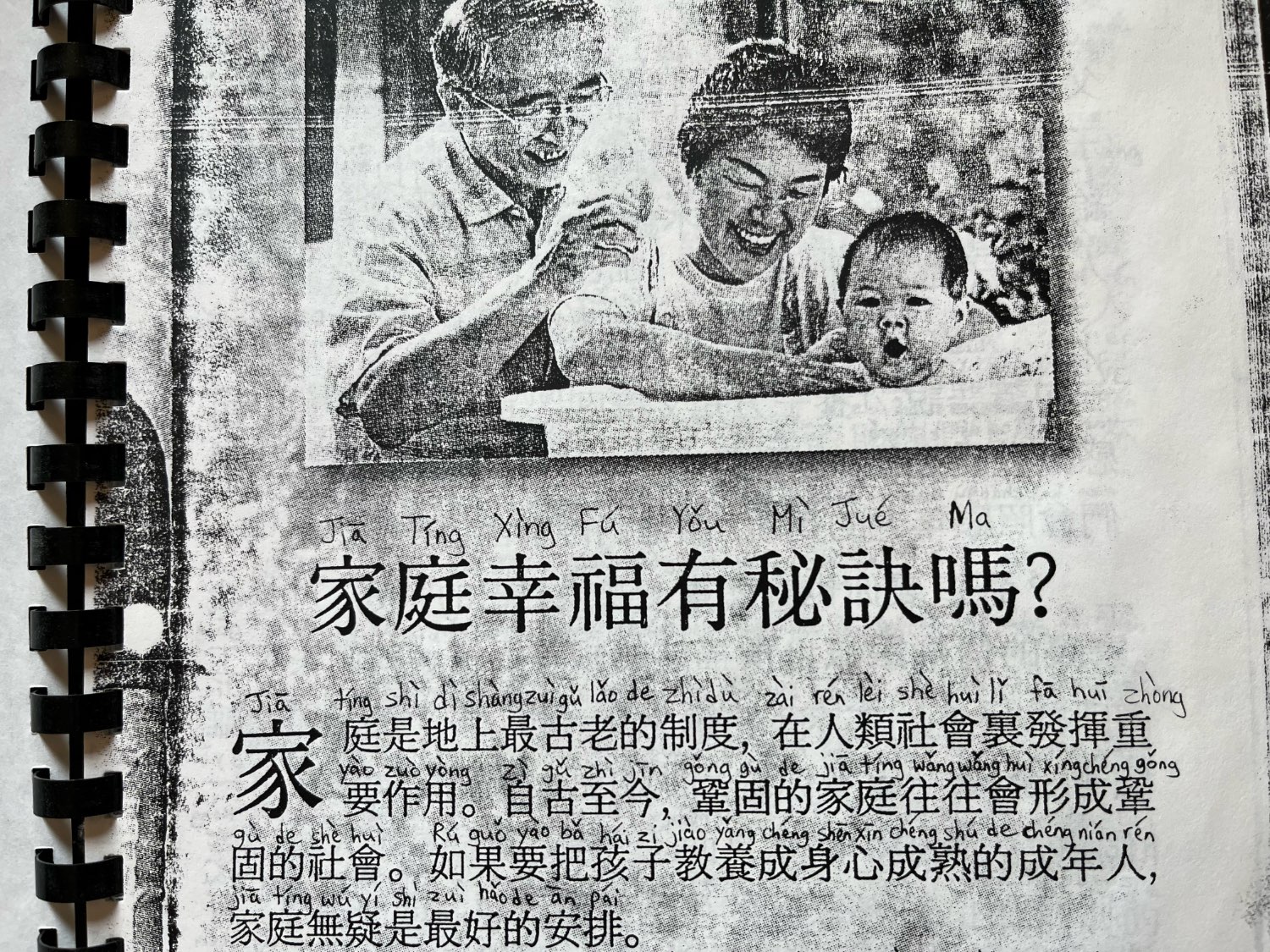
Photocopied and handwritten Pīnyīn (Pīn·yīn {Piecing Together of} · Sounds → [Pinyin] 拼音) material from 1997, based on the book The Secret of Family Happiness
PCs, Email, and Printers
A few years afterwards, in the early 2000s, I was serving where the need was great in the burgeoning Mandarin field in Calgary, where I was assigned by an unusually pragmatic and open-minded Chinese elder to develop similar Pīnyīn (Pīn·yīn {Piecing Together of} · Sounds → [Pinyin] 拼音)-containing material for the local Mandarin field language learners—the brothers in Calgary at the time felt far from the West Coast, and had decided that they would be more comfortable with a local supply of such material.
Starting with a “clean sheet of paper” and using the personal computer technology that had become available and reasonably inexpensive at the time, I designed and started producing what was evidently the first material of the kind that eventually came to be commonly known as 3-line material. When the above-mentioned elder suggested adding English to the material that had up to this point only contained characters and Pīnyīn (Pīn·yīn {Piecing Together of} · Sounds → [Pinyin] 拼音), I balked at first—it was already going to be so much work just to enter the characters and add the Pīnyīn (Pīn·yīn {Piecing Together of} · Sounds → [Pinyin] 拼音)! However, I decided to make some prototype material that included English, and when one of the local brothers who was learning Mandarin saw a printout of it, his eyes seemed to pop out of his head, and he practically grabbed the printout out of my hands to get a closer look at it! That helped me to decide that the additional time and work needed for me to add the English translations would be a worthwhile investment that would greatly benefit the multiple people who would use the material to help them learn the Mandarin they need in the Mandarin field.
Whereas the photocopied material mentioned above that was produced starting in the 1980s or 1990s was produced and distributed entirely in the paper realm, this new material was produced in the digital realm in word processing programs, and distributed as digital files (albeit ones still meant to be printed out on paper). Thus, I was able to email the files to whoever asked for them, after I emailed a few acquaintances I had in the nearby Canadian and American Mandarin fields about them.
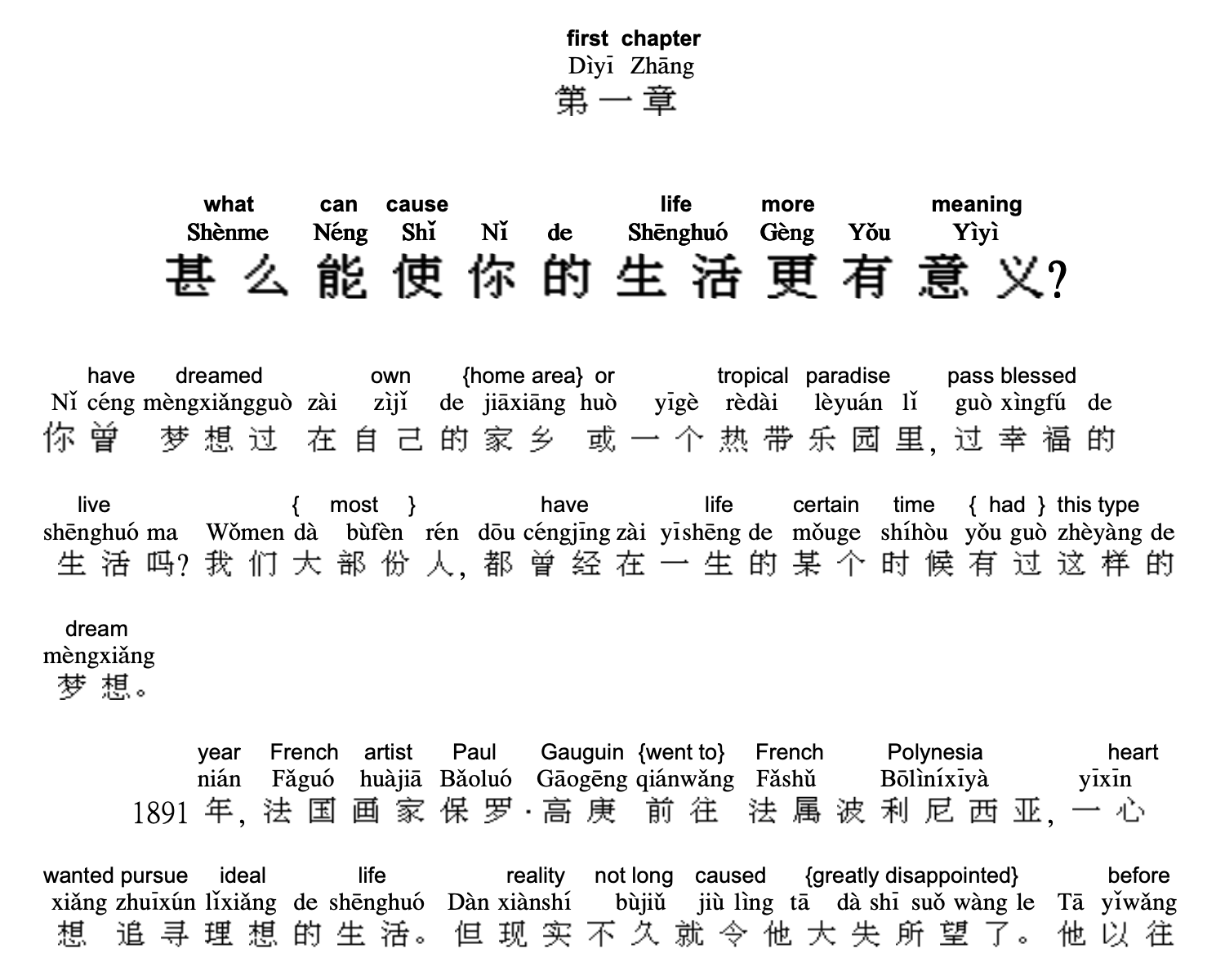
A screenshot of early 3-line PDF material from 2001, based on the book Is There a Creator Who Cares About You?
And boy, did people start asking for them! Amazingly, people in the Mandarin field began telling their friends and fellow workers about the files, and I began to get emails from all around the world—from every continent except Antarctica—requesting them. I remember getting a bit emotional after getting an email from the UK requesting the files and telling me about the growing Chinese fields there—it felt like finding out about a part of your family that before, you had no idea existed. I also remember feeling amazed and doing a double take after seeing that I had gotten an email from someone in the Chinese group in Budapest, Hungary, where the above-mentioned Sis. Königer later served for a long time.
For those who weren’t around then, let me provide a bit more background information about the situation in the worldwide Mandarin field at the time, to help put this enthusiastic worldwide response in perspective. At the time, jw.org was still many years away from coming online and becoming a place on the web where one could just go and view or download abundant material based on official publications and containing Pīnyīn (Pīn·yīn {Piecing Together of} · Sounds → [Pinyin] 拼音). This was also before the iPhone came out in 2007, before Android was introduced in 2008, and before the iPad came out in 2010. What many people in the worldwide Mandarin field did have at that time, though, were personal computers (PCs and Macs), email, printers, and an organizationally existentially urgent situation caused by the frustratingly complex and difficult-to-learn-and-remember Chinese characters, which can take years, even decades, for a language learner to get functionally proficient with.
Pinyin Material or Bust
Many of the Mandarin pregroups, groups, and congregations around the world at that time were quite new, with zero or very few publishers who were native Mandarin-speakers, and thus zero or very few people, especially brothers, who could function effectively in the Mandarin field with publications that contained only Chinese characters. So, they really, really needed material like that early 3-line material. Especially for many Mandarin pregroups and groups around the world at that time, getting the Pīnyīn (Pīn·yīn {Piecing Together of} · Sounds → [Pinyin] 拼音)-containing material or not literally meant the difference between being able to conduct their Mandarin meetings or not being able to do so.
And so, email requests came pouring in from around the world for the early 3-line unofficial material that I was producing, with only a few occasional helpers, in my little rented basement suite in a territory far from the home where I grew up. That was a hard time to go through—the material, while no longer having to be painstakingly handwritten, still took a lot of time and effort to produce, week after week, and many of those around me did not understand or appreciate this highly unusual, pressure-filled, high-stakes situation that I found myself in. During that time, I learned and lived the Mandarin saying “qí ({(if one) rides} 骑 騎)‐hǔ (tiger 虎)‐nán ({(it) is difficult} 难 難)‐xià ({to get down} 下)”. However, like Sis. Königer said, ultimately I could feel Jehovah directing things and helping me through it all.
3lines.org and Official Pinyin Resources
After about two and a half years in Calgary, difficulty in finding secular work caused me to move back to the city I grew up in, where, on reflection, the project in Calgary that produced that early 3-line material would probably never have gotten going, due to the relatively complacent—and, perhaps, proud—acceptance of the status quo among those in the local Mandarin field, which by then had become relatively well-established. (Actually, on reflection, the development and distribution of unofficial and official Pīnyīn (Pīn·yīn {Piecing Together of} · Sounds → [Pinyin] 拼音)-containing material for the Mandarin field seems, as a whole, like what in physical warfare is known as a flanking manoeuvre, as opposed to a conventional frontal assault on the status quo of the world’s Mandarin language situation that we Mandarin field language learners must deal with, i.e., just having everyone learn Mandarin the traditional hard way.) Eventually, I was invited to work with the international team of publishers that ran the 3lines.org website, and that began producing 3-line material on an industrial scale.
Meanwhile, on the official side of things, the organization eventually started to produce official printed Pīnyīn (Pīn·yīn {Piecing Together of} · Sounds → [Pinyin] 拼音) versions of a few selected publications. These contained Simplified Chinese characters with Pīnyīn (Pīn·yīn {Piecing Together of} · Sounds → [Pinyin] 拼音) ruby text—no English. (I suppose the official team[s] involved decided that it was not worthwhile to include English translations, due to the tremendous additional ongoing investments in time, effort, and contributed funds that would be required to produce them on an ongoing basis to the quality level required of official material, which after all is primarily spiritual food, not language-learning material.)
Being printed on paper, though, these official Pīnyīn (Pīn·yīn {Piecing Together of} · Sounds → [Pinyin] 拼音) publications had to be physically printed and trucked/moved by rail/flown/literally shipped/etc. to the various Mandarin pregroups, groups, and congregations around the world that needed them. Generally these shipments would arrive in time for them to be used at the meetings in which they were scheduled to be used, but unfortunately, in spite of the best efforts of those involved, sometimes they would not—that was just the challenging nature at the time of producing and distributing paper publications on an ongoing tight schedule.
Over time, the organization got better at producing and delivering paper Pīnyīn (Pīn·yīn {Piecing Together of} · Sounds → [Pinyin] 拼音) publications on time, and it also eventually began to make digital Pīnyīn (Pīn·yīn {Piecing Together of} · Sounds → [Pinyin] 拼音)-containing material widely available for viewing on the web and downloading. Thanks to reader SB, here is some information on when these official resources became available:
Official Pinyin Watchtower started in 2002.
Other dates: jw.org with PDFs was 2010, WOL was 2012…, WOL expanded to pre-2000 publications in 2018
(English in April, Trad. Chinese in August, Simplified in November)
and official pinyin added in 2019. Official pinyin then came
to the JW Library app in 2024.
These developments, along with the collective Brobdingnagian efforts of others on the 3lines.org team, helped a lot to provide numerous powerfully enabling resources for Mandarin field language learners. Meanwhile, there continued to be a lot of work for me to do in this regard as well.
Mobile Devices, the Web, and Linguistics
In the early-2010s, with the post-PC mobile revolution in full swing after the iPad was introduced and became “the most quickly adopted non-phone electronic product” ever, I found myself working on my iPhone/iPad app Pinyin Typist, and doing deep research on Pīnyīn (Pīn·yīn {Piecing Together of} · Sounds → [Pinyin] 拼音), Chinese characters, and writing systems and linguistics in general. After all that I had gone through trying to learn characters and trying to help others to deal with the difficulties caused by characters, when I figured out from my research that actually, Pīnyīn (Pīn·yīn {Piecing Together of} · Sounds → [Pinyin] 拼音) is a good, workable writing system on its own for Mandarin, and that characters are thus not a technical necessity, but rather, just an unusually deeply rooted cultural tradition, that was a mind-blowing moment for me.
To share the potentially game-changing things I had learned with my fellow Mandarin field language learners, I eventually wrote and posted articles including “Pīnyīn (Pīn·yīn {Piecing Together of} · Sounds → [Pinyin] 拼音) Was Plan A”, which it seems many in the Mandarin field have read and benefitted from. Also, I eventually took the learnings from my experience in the Mandarin field and from my research into linguistics and into web and mobile technologies and began producing Pīnyīn (Pīn·yīn {Piecing Together of} · Sounds → [Pinyin] 拼音) Plus material. This new generation of mobile-first, speech-first material works well on the mobile devices so prevalent now among Mandarin field language learners. Also, rather than going along with the common practice in Satan’s world of diverting Mandarin learners into the deep, dark rabbit hole that is the Chinese characters, Pīnyīn (Pīn·yīn {Piecing Together of} · Sounds → [Pinyin] 拼音) Plus material focuses on helping Mandarin field language learners to learn to speak understandably and persuasively in Mandarin so that they can reach the hearts of Mandarin-speaking people with Bible truth.—1 Corinthians 14:8–11.
After a few years, in the late 2010s, as the official Pīnyīn (Pīn·yīn {Piecing Together of} · Sounds → [Pinyin] 拼音)-containing resources became established, the unofficial team of publishers running 3lines.org was directed by the organization to fundamentally change their unofficial operation, resulting in that website scaling down drastically. However, even though I know the organization is aware of my activities—outside of 3lines.org—producing materials for Mandarin field language learners, I have not received any similar direction from it. So, I have continued doing what I can to provide resources for Mandarin field language learners, including several Pīnyīn (Pīn·yīn {Piecing Together of} · Sounds → [Pinyin] 拼音) Plus resources based on official publications (with deeply researched and extensive disclaimers about them not being spiritual food, but rather, Mandarin field language-learning resources), and this MEotW blog that you are now reading.
“It’s Like You Are Travelling and Jehovah Is Directing You”
Looking back now in 2025, it is evident that in spite of temporarily limited technology and the ongoing traditional cultural inertia and disdainful dismissiveness of those brainwashed by a world that glamourizes and practically idolizes Chinese characters, abundant official (and unofficial) Pīnyīn (Pīn·yīn {Piecing Together of} · Sounds → [Pinyin] 拼音)-containing resources have become widely and easily available to Mandarin field language learners around the world. Besides those already mentioned above, other significant Pīnyīn (Pīn·yīn {Piecing Together of} · Sounds → [Pinyin] 拼音)-containing Mandarin field resources that many have found helpful include theocratic Mandarin courses, such as that included in the official JW Language app, and also the various resources mentioned on the Referenced Theo. Expressions (RTE) website, such as the phonetic WOL apps. The Pīnyīn (Pīn·yīn {Piecing Together of} · Sounds → [Pinyin] 拼音)-containing resources that are available for Mandarin field language learners help them to be able to powerfully and effectively glorify Jehovah and save lives in the vast worldwide Mandarin field, without being egregiously obstructed by burdensome unnecessary difficulties imposed by the human traditions surrounding Chinese characters.
Interestingly, in this regard, in the above-mentioned video (© 2016), starting at about the 4:35 mark, while describing her experience in the Mandarin field in Budapest, Hungary, Sis. Königer can be seen using one of the old, bulky but beloved printed Pīnyīn (Pīn·yīn {Piecing Together of} · Sounds → [Pinyin] 拼音) New World Translation Bibles:

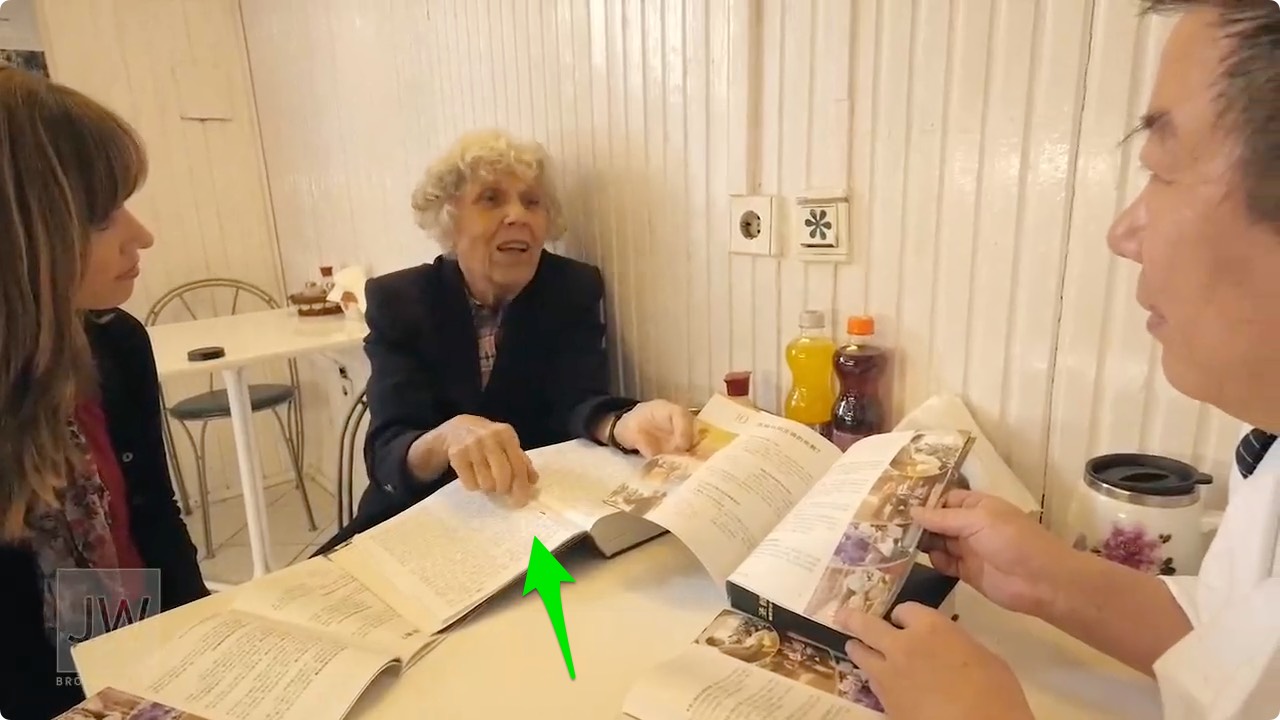
Also, starting at about the 4:43 mark, she and others can be seen using the old printed Pīnyīn (Pīn·yīn {Piecing Together of} · Sounds → [Pinyin] 拼音) Sing to Jehovah songbook, which included musical notation:
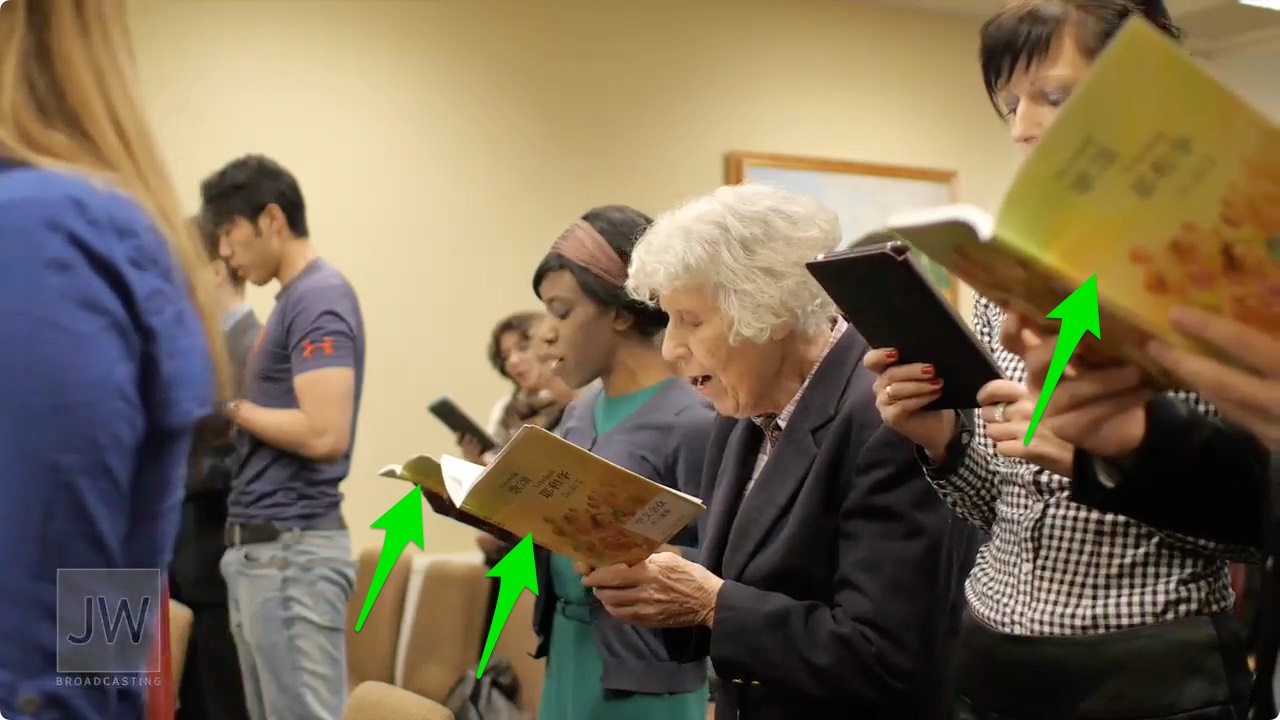
Yes, in view of what I have witnessed and experienced in the Mandarin field, I heartily agree with Sis. Königer’s conclusion that she states starting at about the above video’s 5:10 mark, that ultimately, Jehovah directs the work of his faithful servants:
If you are in the full-time service, I think it’s like you are travelling and Jehovah is directing you. So I don’t worry. The responsibility is with Jehovah. I mean, we have to be faithful. That is our responsibility. But, what is happening is: Jehovah knows what he lets happen. It’s OK. And I hope everybody who is young, they will do the same because they will miss something, because it’s very satisfying. And working with Jehovah, you cannot compare it to anything else.
